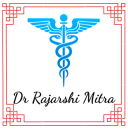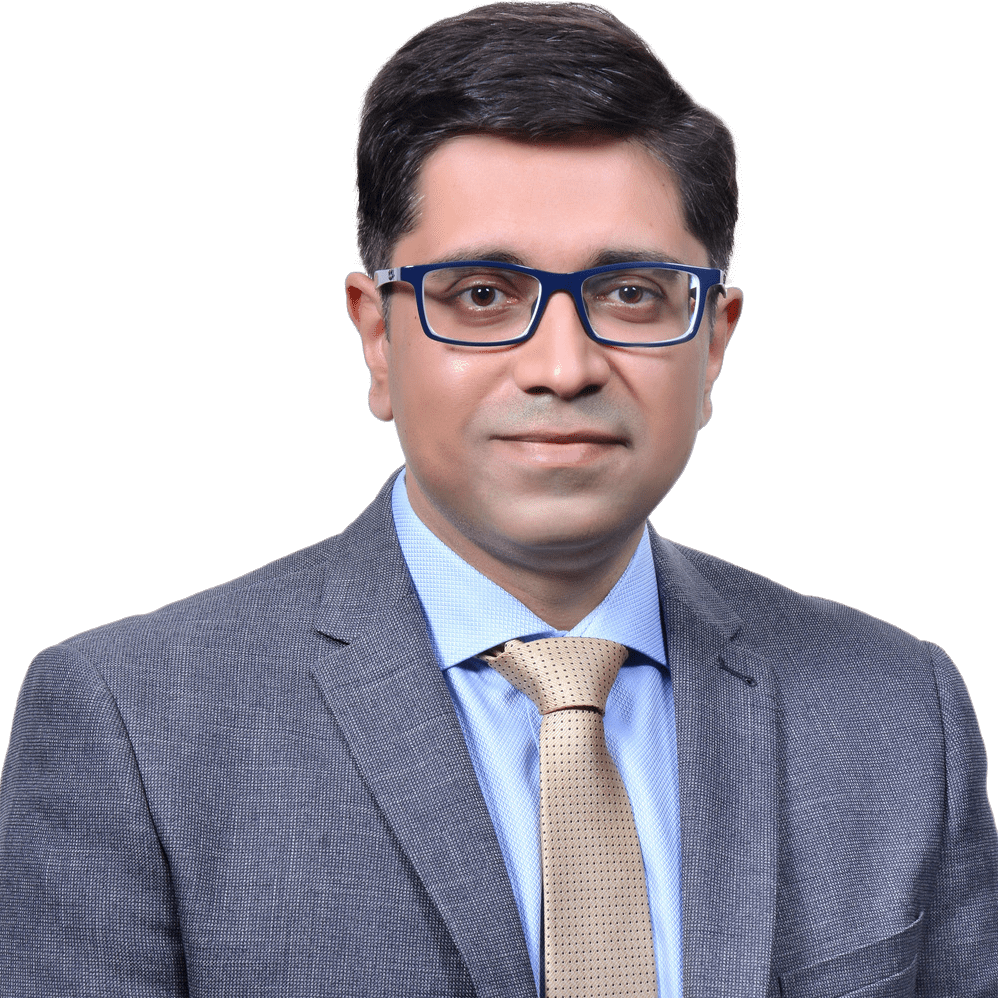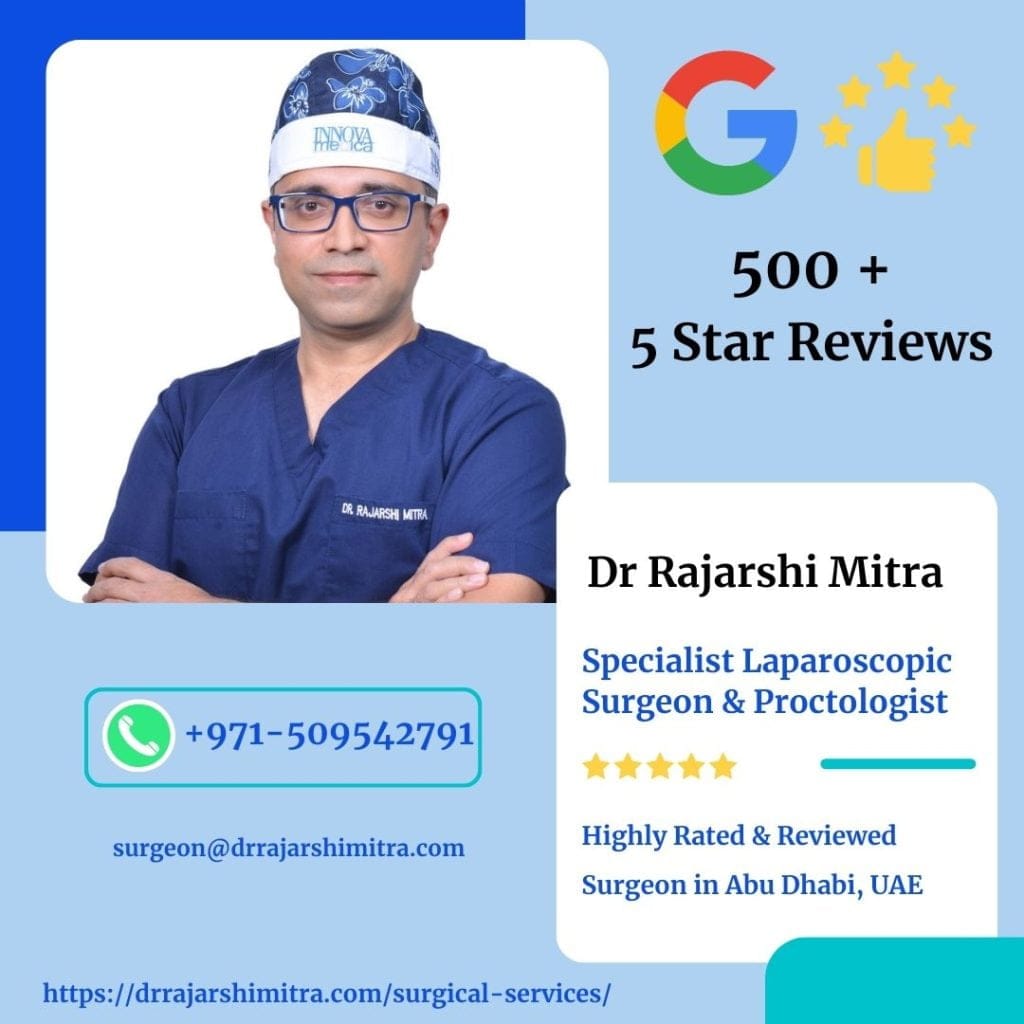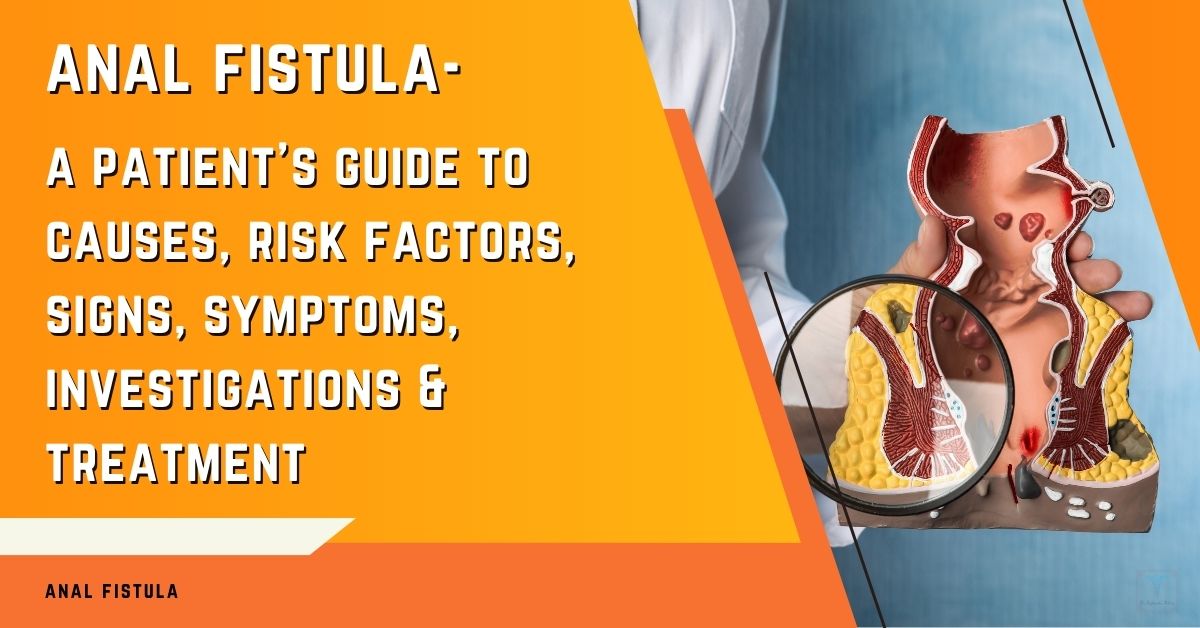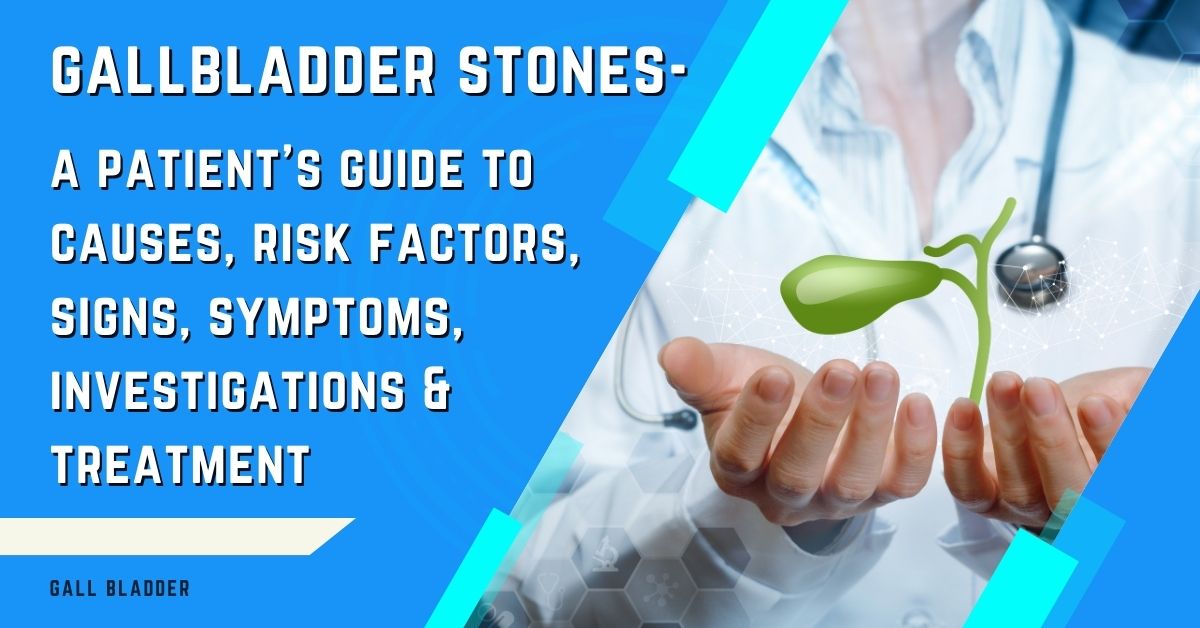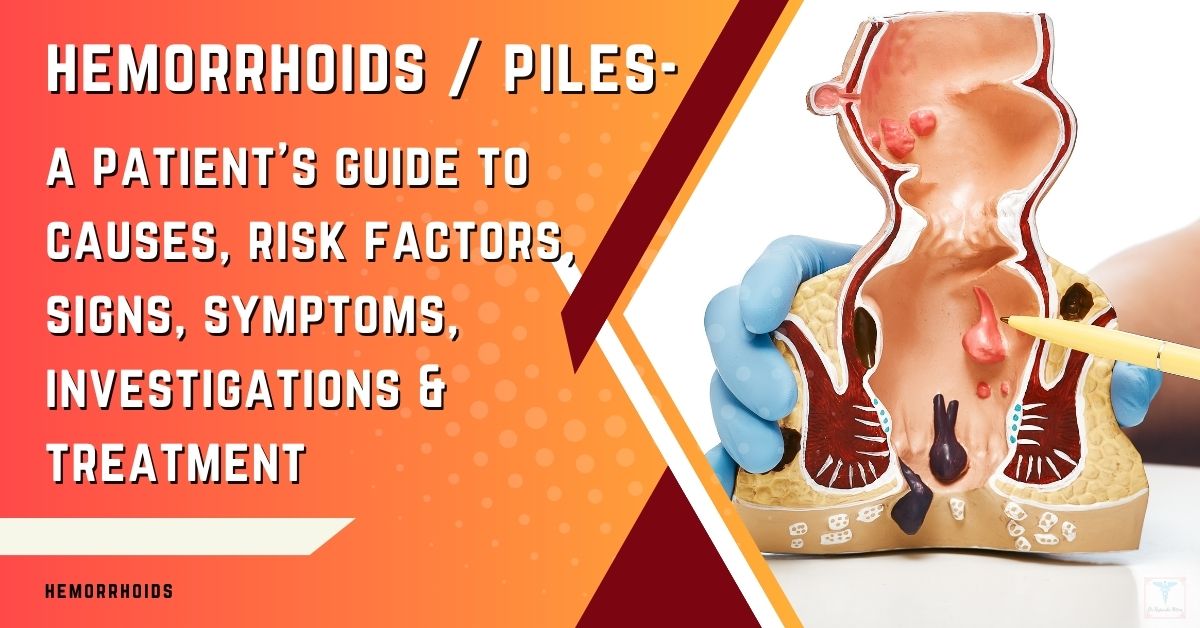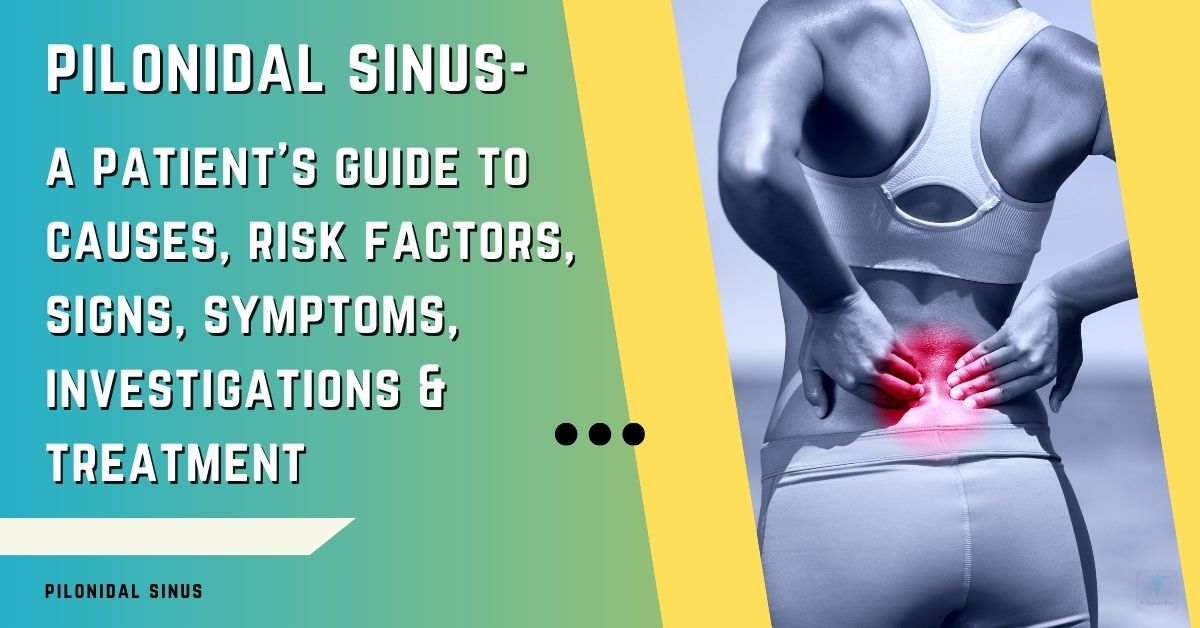Understanding Acute Cholecystitis
What is Acute Cholecystitis?
Acute cholecystitis is a sudden inflammation of the gallbladder, a small, pear-shaped organ located beneath your liver in the upper right abdomen. This condition is a common cause of abdominal pain and often requires prompt medical attention.
As a laparoscopic surgeon in Abu Dhabi, I see this condition frequently, and understanding its causes and symptoms is critical for timely treatment.
The Gallbladder’s Role
The gallbladder’s primary function is to store and concentrate bile, a digestive fluid produced by the liver. When you eat, particularly fatty foods, the gallbladder releases bile into the small intestine to aid in the digestion and absorption of fats. This process is usually seamless, but problems arise when something obstructs the gallbladder, leading to inflammation and acute cholecystitis.
Definition of Acute Cholecystitis
Acute cholecystitis is characterized by a rapid onset of inflammation, typically within hours or days. It is different from chronic cholecystitis, which develops over a longer period. The acute form often presents with severe pain, and without prompt treatment, it can lead to serious complications. It’s essential to recognize the symptoms early and seek expert medical advice.

How Common is Acute Cholecystitis?
Acute cholecystitis is a prevalent condition, and it is one of the most common reasons for hospitalization due to abdominal pain. Gallstones are a major cause, and studies have shown that 10-20% of adults in the developed world have gallstones. Not all people with gallstones will develop cholecystitis, but the risk increases with age, especially in women and those with other risk factors like obesity or diabetes.
In my practice in Abu Dhabi, I’ve observed that many patients present with this condition, reinforcing the importance of awareness and timely intervention.
Acute vs. Chronic Cholecystitis
It is essential to distinguish between acute and chronic cholecystitis as they have different clinical features and treatments.
Differences in Presentation
Acute cholecystitis usually presents with a sudden onset of severe upper abdominal pain, often localized to the right upper quadrant. It is frequently associated with nausea, vomiting, and fever. The symptoms typically intensify quickly and may require immediate medical intervention.
On the other hand, chronic cholecystitis develops gradually and may present with less intense but persistent pain, discomfort, and digestive issues. It often results from repeated episodes of inflammation.
Differences in Progression
Acute cholecystitis is characterized by a sudden inflammatory process due to the gallbladder being blocked, often by a gallstone. If left untreated, it can lead to serious complications such as gallbladder rupture, infection, or pancreatitis.
Chronic cholecystitis, conversely, is a slower, progressive inflammatory condition. It results from repeated inflammation of the gallbladder which may eventually lead to a shrunken, non-functioning gallbladder.
The long-term nature of chronic inflammation can result in scarring and fibrosis of the gallbladder wall.
Understanding the Causes of Acute Cholecystitis
Understanding the causes of acute cholecystitis is crucial for effective treatment and prevention. As a laparoscopic surgeon with extensive experience here in Abu Dhabi, I’ve seen firsthand how various factors can contribute to this condition. Let’s look into the key causes:
The Role of Gallstones (Acute Calculous Cholecystitis)
Gallstones are the most frequent culprits behind acute cholecystitis. This form of the condition is known as acute calculous cholecystitis, where “calculous” refers to the presence of stones.
How Gallstones Block the Cystic Duct and the Bile Duct
Gallstones form when substances in bile, such as cholesterol or bilirubin, harden into solid particles. These stones can range in size from tiny grains of sand to larger masses.
When a gallstone moves out of the gallbladder and lodges in the cystic duct, which is the narrow passage that drains bile from the gallbladder, it can cause a blockage.
This blockage results in bile accumulation within the gallbladder, leading to increased pressure and inflammation.
If the gallstone passes through the cystic duct and blocks the common bile duct, it can also cause other issues like jaundice and pancreatitis.
The Link to Inflammation
The blockage caused by gallstones is the primary trigger for the inflammatory process in acute cholecystitis. The trapped bile irritates the gallbladder walls, causing them to become inflamed. Over time, this can lead to edema (swelling), tissue damage, and, if severe, infection of the gallbladder. If this happens, it can cause severe pain, which requires immediate medical attention.
Acalculous Cholecystitis
In some cases, acute cholecystitis can occur without the presence of gallstones. This condition is known as acalculous cholecystitis. It is less common than the calculous form but can be more serious.
Causes of Acalculous Cholecystitis
Acalculous cholecystitis is often associated with other medical conditions and is most frequently seen in critically ill patients, those undergoing major surgery, or people with severe burns or infections.
Factors that can contribute to this condition include:
Reduced blood flow to the gallbladder, which can be due to shock or other severe illnesses.
Prolonged fasting or total parenteral nutrition (TPN), which can cause bile stasis.
Severe trauma or major surgery that puts stress on the body and affects gallbladder function.
Long term use of some intravenous medicines.
Infections such as Cytomegalovirus (CMV).
Risk Factors for Acalculous Cholecystitis
Risk factors for developing acalculous cholecystitis include:
- Critical illness and ICU admissions: Patients in intensive care units are more susceptible.
- Major surgical procedures: Particularly abdominal or cardiac surgeries.
- Severe burns or trauma: Due to the body’s stress response.
- Immune suppression: People with weakened immune systems are more vulnerable to infections that may cause inflammation of the gallbladder.
- Diabetes mellitus: Long-term diabetes is associated with increased risk of gallbladder disease including acalculous cholecystitis.
Other Risk Factors
Beyond gallstones and conditions leading to acalculous cholecystitis, other risk factors can increase the likelihood of developing acute cholecystitis.
Age and Gender
As we age, the risk of developing gallstones and consequently, cholecystitis, increases. Women, particularly those of childbearing age, are more prone to gallstones due to hormonal influences and pregnancies, making them more susceptible to acute cholecystitis.
Obesity and Diet
Being overweight or obese significantly increases your risk of gallstones, and subsequently acute cholecystitis. A diet high in fat and low in fiber also contributes to the formation of gallstones.
Other Medical Conditions
Several other medical conditions increase the risk of acute cholecystitis, including:
Diabetes: Both type 1 and type 2 diabetes can lead to gallbladder disease.
High cholesterol: This increases the risk of developing cholesterol gallstones.
Rapid weight loss: This can cause changes in bile composition, leading to stone formation.
Family history: Having a family member with gallbladder disease increases your risk.
Certain medications: Certain medications may cause an increased risk of gallbladder issues.
Recognizing the Symptoms of Acute Cholecystitis

Recognizing the symptoms of acute cholecystitis is crucial for prompt diagnosis and treatment.
As a laparoscopic surgeon here in Abu Dhabi, I emphasize that early detection can significantly improve patient outcomes.
Here’s what you need to know about the symptoms:
Common Symptoms
The symptoms of acute cholecystitis usually appear suddenly and can be quite severe. They often require immediate medical attention.
Abdominal Pain Location:
The most common symptom is abdominal pain, typically located in the upper right quadrant of the abdomen, just below the rib cage. The pain might also extend to the upper middle abdomen or radiate to the right shoulder blade.
Pain Characteristics:
The pain associated with acute cholecystitis is usually sharp, severe, and constant. It can last from a few hours to several days. Unlike the cramping pain of gallstones, the pain of acute cholecystitis is persistent and does not usually come and go. It may worsen with deep breaths or movement.
Nausea and Vomiting:
Nausea and vomiting often accompany the pain of acute cholecystitis. This is due to the body’s reaction to the inflammation and pain. It’s important to note that while these symptoms can be due to other causes as well, their occurrence alongside upper abdominal pain is a significant indication of gallbladder issues.
Fever and Chills:
Fever and chills are common signs of infection and inflammation. If you experience these symptoms along with abdominal pain, it suggests a more severe form of the condition, such as an infected gallbladder, and requires immediate medical evaluation.
Less Common Symptoms
While the symptoms mentioned above are the most common, there are some less frequent signs of acute cholecystitis.
Jaundice:
Jaundice, a yellowing of the skin and the whites of the eyes, can occur if a gallstone blocks the common bile duct. This prevents bile from flowing normally, leading to a buildup of bilirubin in the blood, which manifests as jaundice. If you notice jaundice, you must seek immediate medical care.
Tenderness on Palpation:
During a physical examination, a doctor will often find tenderness on palpation in the right upper quadrant of the abdomen. This means that pressing on the area will cause pain. This finding is known as “Murphy’s sign” and is a classical finding in acute cholecystitis.
When to Seek Immediate Medical Help
It is very important to know when to seek immediate medical attention. You should seek immediate medical attention if you experience:
- Severe and persistent abdominal pain in the upper right quadrant or the upper middle abdomen.
- Abdominal pain accompanied by nausea and vomiting.
- Fever and chills, especially along with abdominal pain.
- Jaundice.
- Significant abdominal tenderness on touch.
If you experience any of these symptoms, it’s crucial to consult with a healthcare professional without delay. Early diagnosis and treatment can prevent serious complications.
As a Laparoscopic Surgeon in Abu Dhabi, I am available to provide expert care to those suffering from gallstone disease and acute cholecystitis.
Diagnosing Acute Cholecystitis

Diagnosing acute cholecystitis involves a combination of physical examination, blood tests, and imaging studies.
As a laparoscopic surgeon practicing here in Abu Dhabi, I utilize these diagnostic tools to accurately identify the condition and develop an appropriate treatment plan.
Here’s an overview of the diagnostic process:
Physical Examination
A thorough physical examination is the first step in diagnosing acute cholecystitis. During this exam, I will:
Assess your symptoms: I will ask about the onset, location, and characteristics of your pain, as well as any other associated symptoms like nausea, vomiting, fever, or jaundice.
Palpate your abdomen: I will gently press on your abdomen, especially the upper right quadrant, to check for tenderness. A positive Murphy’s sign, where pain is elicited by palpation during a deep breath, is a significant finding suggestive of acute cholecystitis.
Look for jaundice: I will check for a yellow tint to your skin and the whites of your eyes, which can indicate a blocked bile duct.
Blood Tests
Blood tests play a crucial role in confirming the diagnosis and assessing the severity of the condition.
Liver Function Tests
Liver function tests (LFTs) measure the levels of various enzymes and proteins in your blood that are produced by the liver.
In acute cholecystitis, these tests may show:
Elevated liver enzymes:
Such as alanine transaminase (ALT), aspartate transaminase (AST), and alkaline phosphatase (ALP). These elevations may indicate inflammation of the liver due to blockage or due to direct inflammation of the gallbladder.
Elevated bilirubin levels:
This can indicate a blocked bile duct causing jaundice.
White Blood Cell Count
A complete blood count (CBC) will be performed which includes a white blood cell (WBC) count. An elevated WBC count suggests an ongoing inflammatory process and is frequently seen in cases of acute cholecystitis. It can also indicate an infection of the gallbladder.
Imaging Tests
Imaging tests are essential for visualizing the gallbladder and surrounding structures. They help confirm the diagnosis and rule out other conditions.
Ultrasound
An abdominal ultrasound is often the first imaging test used to diagnose acute cholecystitis. It is a non-invasive and readily available test that uses sound waves to create images of the gallbladder.
With an ultrasound, we can identify:
Gallstones: Presence of stones in the gallbladder.
Thickened gallbladder wall: A sign of inflammation.
Fluid around the gallbladder: Indicating severe inflammation.
Pericholecystic fluid: Fluid surrounding the gallbladder, suggesting severe inflammation.
CT Scan
A computed tomography (CT) scan is another imaging technique that can be used in diagnosing acute cholecystitis. CT scans use X-rays to create detailed images of the gallbladder and surrounding organs. A CT scan is particularly useful when the diagnosis is uncertain, or to evaluate complications like a gallbladder rupture or an abscess.
A CT scan can identify:
- Gallstones particularly if they are calcified.
- Gallbladder inflammation and wall thickening.
- Complications like abscess formation or perforation.
HIDA Scan
A hepatobiliary iminodiacetic acid (HIDA) scan, also known as a cholescintigraphy, is a nuclear medicine scan that assesses the function of the gallbladder.
In this test, a radioactive tracer is injected into your bloodstream and tracked as it passes through your liver, gallbladder, and bile ducts. A HIDA scan can be particularly useful if the diagnosis is uncertain after an ultrasound or CT scan.
The HIDA scan can identify:
Blockage of the cystic duct: If the tracer does not enter the gallbladder, this indicates a blockage and is a sign of acute cholecystitis.
Gallbladder function: By looking at how well the tracer enters and leaves the gallbladder, we can evaluate the function of the gallbladder.
In my practice here in Abu Dhabi, I carefully consider the results of these diagnostic tests to make an accurate diagnosis of acute cholecystitis and to determine the best course of treatment for my patients.
Treatment Options for Acute Cholecystitis
Treatment for acute cholecystitis depends on the severity of the condition and your overall health.
As a laparoscopic surgeon in Abu Dhabi, I prioritize a comprehensive approach, combining initial management with surgical or non-surgical interventions based on the individual needs of my patients.
Here’s an outline of the available treatments:
Initial Management
Upon diagnosis, initial management focuses on stabilizing your condition and controlling the inflammation.
Intravenous Fluids
Intravenous (IV) fluids are crucial to restore hydration, particularly if you have been experiencing nausea and vomiting. Maintaining proper fluid levels supports the body’s ability to heal and function efficiently.
Pain Medications
Pain management is a key component of initial care for acute cholecystitis. We use analgesics like NSAIDs and opioids, tailored to the individual’s pain level and medical history. These medications help alleviate discomfort and allow you to rest comfortably while treatment is administered.
Antibiotics
Antibiotics are often prescribed when there are signs of infection, such as fever and elevated white blood cell counts. These medications target the bacteria causing the infection, preventing complications and promoting healing.
Surgical Treatment
Surgery is often the definitive treatment for acute cholecystitis, especially when gallstones are the cause. The gold standard surgical treatment for this condition is a cholecystectomy (removal of the gallbladder).
Laparoscopic Cholecystectomy
Laparoscopic cholecystectomy is the most common surgical approach for acute cholecystitis. It is a minimally invasive procedure that involves removing the gallbladder through small incisions using specialized instruments and a camera.
The Procedure Explained
The procedure is performed under general anesthesia. I will create small incisions in your abdomen. Through these small incisions, I will insert a small camera and specialized surgical instruments. This allows me to visualize the gallbladder and surrounding structures on a monitor. I will carefully detach the gallbladder from the liver and remove it through one of the small incisions.
Benefits of Laparoscopic Surgery
The benefits of laparoscopic cholecystectomy include:
- Smaller Incisions: Resulting in less scarring and pain.
- Shorter Hospital Stay: Patients typically recover quicker and can go home sooner than with open surgery.
- Faster Recovery: Return to normal activities is typically quicker compared to traditional surgery.
- Less Postoperative Pain: Minimally invasive surgery generally results in less pain after the surgery.
- Reduced risk of complications: Reduced risk of complications like wound infections or hernias.
Recovery and Post-Operative Care
Recovery from laparoscopic cholecystectomy is usually quick. You will likely be able to return home after a day or two. You will be provided with instructions on post-operative care, which includes pain management, wound care, and dietary recommendations. I generally recommend patients to avoid heavy lifting and strenuous activity for a few weeks to ensure a smooth recovery.
Open Cholecystectomy
In some instances, an open cholecystectomy, which is a more traditional approach involving a larger incision, may be necessary. This may be required if there is severe inflammation, complications, or if laparoscopic surgery is not feasible. Recovery from an open cholecystectomy is typically longer compared to laparoscopic surgery.
When is surgery necessary?
Surgery is necessary in acute cholecystitis for several reasons:
- Persistent symptoms: Surgery is required if symptoms do not improve with initial management.
- Complications: Surgery is essential if there is a risk of serious complications such as gallbladder perforation (rupture), peritonitis (infection of the abdominal cavity) or a gallbladder abscess.
- High recurrence risk: If there is a high risk of recurrence of acute cholecystitis.
Non-Surgical Management
Non-surgical management is considered when surgery is not an option or when a patient is not fit for surgery due to other medical conditions.
When Surgery is not an option
Surgery may not be an option for several reasons:
- Severe underlying health conditions: Patients with serious health problems, such as severe heart or lung disease, may not be able to tolerate surgery.
- Unstable medical condition: In unstable patients, it is advisable to avoid major surgery, and manage the condition by non-surgical options.
- Patient refusal: Some patients may refuse surgery, so they will require non-surgical treatment for acute cholecystitis.
Drainage of the Gallbladder
When surgery is not advisable, a percutaneous cholecystostomy can be performed. This involves inserting a small tube through the skin and into the gallbladder to drain the infected fluid and pus. The procedure is usually guided by ultrasound or CT imaging.
This procedure helps relieve the pressure in the gallbladder, reduce infection, and provide symptom relief. It is usually done on very ill patients who are not fit for surgery, and it can help them recover and stabilize before further treatment.
Recovery and Aftercare Following Acute Cholecystitis Treatment
Proper recovery and aftercare are essential for healing and long-term well-being after treatment for acute cholecystitis.
As a laparoscopic surgeon in Abu Dhabi, I emphasize that following post-operative instructions and making necessary lifestyle adjustments is crucial for a smooth recovery.
Here’s what you can expect:
Post-operative Recovery
The recovery process varies depending on whether you underwent laparoscopic or open surgery. Generally:
- Laparoscopic Surgery: You can expect a relatively quick recovery, with most patients returning home within 1-2 days. The small incisions usually heal within a few weeks.
- Open Surgery: Recovery from open cholecystectomy is longer, with a hospital stay of up to a week and a few weeks before you can return to your normal activities.
Regardless of the surgical approach, you will have some discomfort, and it is essential to follow all post-operative care instructions provided by your healthcare team.
Pain Management
Effective pain management is key to a comfortable recovery.
Here’s what to expect:
- Medications: You will be prescribed pain relievers, which should be taken as directed. Typically, the pain will be at its worst in the first few days and then will gradually improve with time.
- Wound Care: Keep the incision site clean and dry to prevent infection.
- Rest: Adequate rest helps your body heal. Avoid strenuous activities or heavy lifting for several weeks.
- Comfort measures: Using ice packs, heat pads and pillows to support your abdomen, might help with pain.
Diet and Lifestyle Changes
Making the right diet and lifestyle adjustments is necessary after your treatment.
- Diet:
In the initial days following the surgery, you may start with a light diet consisting of clear liquids and soft foods and then gradually return to your regular diet.
Following your gallbladder removal, your body will be able to absorb fats efficiently, so you may not need to follow a restricted diet after your recovery. It may take a few weeks for your digestive system to adjust.
Avoid fatty, fried, and processed food as they may cause discomfort and digestive issues, such as diarrhea.
- Hydration:
Drink plenty of fluids to prevent dehydration and help with bowel regularity.
- Activity:
In the initial weeks following your surgery, you should start with gentle exercises like walking, and then you may gradually increase your activity level, depending on your comfort levels.
Always consult with your healthcare provider before starting any new exercise program.
- Follow-up:
Keep all your follow-up appointments with your surgeon. This is important so that your surgeon can monitor your progress and deal with any issues that may arise.
Potential Complications
While complications are rare, it’s important to be aware of them:
- Infection:
Keep an eye out for any signs of infection, such as redness, swelling, warmth, and pus from the incision site. Also, be on the lookout for fever and chills. Notify your surgeon immediately if these occur.
- Bleeding:
While minor bruising is normal after surgery, you should immediately notify your doctor if you have any significant bleeding from the incision sites.
- Bile leak:
Bile may leak into the abdominal cavity from the site of removal of the gallbladder, if it happens, you may require additional treatment.
- Injury to bile ducts or surrounding organs:
Though rare, these may happen during surgery and may require further treatment.
- Post-Cholecystectomy Syndrome:
Some patients may continue to have symptoms after gallbladder removal like upper abdominal pain, indigestion, or diarrhea. These may improve over time or they may require medical management.
- Deep Vein Thrombosis (DVT) and Pulmonary Embolism (PE):
Formation of blood clots in the legs or lungs is a very rare possibility following any surgery, and it is important to look out for any symptoms such as pain, redness, or swelling in the legs or difficulty breathing.
It is essential to be aware of these potential complications and to report any unusual symptoms or issues to your surgical team immediately, so they can be addressed promptly.
In most cases, following all your post-operative instructions should result in an uneventful and smooth recovery.
Prevention of Acute Cholecystitis
While not all cases of acute cholecystitis are preventable, adopting a healthy lifestyle and maintaining regular health checkups can significantly reduce your risk.
As a laparoscopic surgeon in Abu Dhabi, I encourage my patients to prioritize preventive measures to maintain their long-term health.
Here’s how you can minimize your risk of developing this condition:
Lifestyle Modifications
Making certain lifestyle changes can greatly impact your gallbladder health and reduce the chances of developing acute cholecystitis.
Dietary Changes
Your diet plays a significant role in preventing gallstone formation, a primary cause of acute cholecystitis.
Here are some key dietary recommendations:
- Increase Fiber Intake: A diet rich in fiber, from fruits, vegetables, and whole grains, helps regulate digestion and promotes healthy bile production, reducing the risk of gallstone formation.
- Limit Saturated and Trans Fats: Foods high in saturated and trans fats, such as fried foods, processed snacks, and fatty meats, can contribute to the formation of gallstones. Limit these from your diet.
- Choose Healthy Fats: Opt for healthy fats like those found in olive oil, avocados, and nuts, which can support gallbladder health.
- Maintain a Balanced Diet: Eating a balanced diet with appropriate portions helps prevent weight gain, a significant risk factor for gallstones and cholecystitis.
- Regular Meal Times: Try to eat at regular times. Skipping meals or prolonged periods of fasting can also contribute to the formation of gallstones.
Weight Management
Maintaining a healthy weight is crucial for preventing gallstone formation and reducing the risk of acute cholecystitis:
- Avoid Rapid Weight Loss: While weight loss is essential for those who are overweight or obese, rapid weight loss can actually increase the risk of gallstones. If you plan to lose weight, do it slowly and steadily to minimize the risk of gallstone formation.
- Exercise Regularly: Engage in regular physical activity to maintain a healthy weight and overall well-being. Aim for at least 30 minutes of moderate exercise most days of the week.
- Achieve a Healthy BMI: Work towards achieving a healthy Body Mass Index (BMI) through a combination of a balanced diet and regular exercise.
Regular Health Checkups
Regular health checkups are important for identifying and managing underlying conditions that may increase your risk of acute cholecystitis:
- Routine Physical Examinations: Visit your doctor for regular checkups. During these visits, your doctor can assess your overall health, look for any risk factors and provide early detection of any issues.
- Manage Underlying Conditions: If you have diabetes, high cholesterol, or other conditions that increase your risk of gallbladder issues, make sure to work closely with your healthcare provider to manage these conditions effectively.
- Follow Medical Advice: Follow the advice of your healthcare professional. If your doctor recommends testing or further evaluation for any gallbladder-related issues, then follow through on their recommendations.
By making these preventative measures a part of your routine, you can significantly reduce your risk of developing acute cholecystitis and maintain your overall health.
As a Laparoscopic Surgeon in Abu Dhabi, I always emphasize to my patients that prevention is better than cure, and taking proactive steps towards healthy living is the best way to maintain your health.
Why Choose Dr. Rajarshi Mitra for Your Cholecystitis Treatment
When facing the prospect of gallbladder surgery, you want to know you are in the most capable and caring hands.
As a Laparoscopic Surgeon with over 20 years of experience, and a Fellow of the American College of Surgeons (FACS), I understand the importance of making the right choice for your care.
Here’s why choosing my practice could make a significant difference in your treatment journey:
Experience and Expertise That Matters
With two decades of experience, I’ve honed my skills in both traditional and advanced laparoscopic techniques. This level of expertise is crucial when dealing with conditions like acute cholecystitis, which requires precise surgical intervention.
My extensive background, which includes advanced training at The Mayo Clinic, Rochester, MN, USA ensures that you benefit from a deep understanding of the complexities of gallbladder surgery and a commitment to the most current best practices.
A Commitment to Minimally Invasive Techniques
I am a strong advocate for laparoscopic cholecystectomy, a minimally invasive approach that offers many advantages including smaller incisions, less pain, and quicker recovery.
My focus on laparoscopic surgery means that I utilize the latest technology to perform procedures with utmost precision, ensuring the best possible outcomes for my patients.
This approach is focused on helping you return to your normal life as quickly and comfortably as possible.
What My 5-Star Reputation Signifies
The 585 five-star reviews I have received reflect my commitment to excellence in surgery and a patient-centered approach to care. These reviews are a testament to the positive experiences my patients have had under my care. These are not just numbers; they represent a genuine reflection of my dedication to providing compassionate and effective surgical treatment. I strive to create a supportive and reassuring environment for all my patients.
Why My Board Certification and Fellowships Matter to You
Being a Fellow of the American College of Surgeons (FACS) signifies that I have met the rigorous standards of training and ethical conduct set by this prestigious organization. This achievement is a testament to my dedication to upholding the highest levels of surgical care.
When you choose a surgeon with such credentials, you are choosing someone who has been recognized for their expertise and commitment to providing exceptional care.
Your Care, Right Here in Abu Dhabi, UAE
Choosing a surgeon who is local to Abu Dhabi offers significant advantages. Having a trusted surgeon nearby provides convenience, easy access to appointments, and a more personalized approach.
As a specialist here, I am familiar with the needs of our community and am dedicated to providing seamless and comprehensive care, from the first consultation to post-operative follow-up.
My local presence is geared towards ensuring your comfort and convenience through every step of your treatment.
My Approach to Patient-Centric Care
I believe that surgery is not just about the procedure, but also about the experience. I am dedicated to providing a holistic, compassionate, and patient-centered approach to care, ensuring that you:
- Are fully informed about your treatment options.
- Receive a personalized treatment plan.
- Feel comfortable and confident in the care you receive.
- Have a smooth and effective recovery process.
- Are fully supported throughout your surgical journey.
My goal is to not only provide excellent surgical outcomes but also to provide a supportive and empathetic experience for you throughout your treatment process.
Conclusion
Acute cholecystitis is a serious condition that requires prompt and effective medical care. Understanding its causes, recognizing its symptoms, and seeking timely treatment are crucial for your well-being.
With the right approach, combining lifestyle modifications, accurate diagnosis, and appropriate medical or surgical interventions, you can effectively manage this condition and return to a healthy and fulfilling life.
As a Laparoscopic Surgeon in Abu Dhabi, I am committed to providing you with the highest level of care and support throughout your journey.
Schedule a Consultation
Take the first step towards managing your acute cholecystitis. I encourage you to schedule a consultation with me to discuss your specific situation, explore treatment options, and create a personalized care plan tailored to your needs.
You can schedule your appointment by visiting our website or by calling our office.
Contact Details and Practice Information
If you are experiencing symptoms of gallbladder issues, you can book an appointment with Dr. Mitra for expert consultation and care, using the following contact information:
Website: https://drrajarshimitra.com/appointment/
Phone: +971-509542791
Email: surgeon@drrajarshimitra.com
Address: https://openmylink.in/CAubp
NMC Specialty Hospital, Department of Surgery, Zayed The First St – Zone 1 – Abu Dhabi – United Arab Emirates.
I look forward to helping you.
By Dr. Rajarshi Mitra, Specialist Laparoscopic Surgeon, Abu Dhabi, UAE
Disclaimer: This article is intended for informational purposes only and should not be considered medical advice. Always consult with a qualified healthcare professional for diagnosis and treatment.
